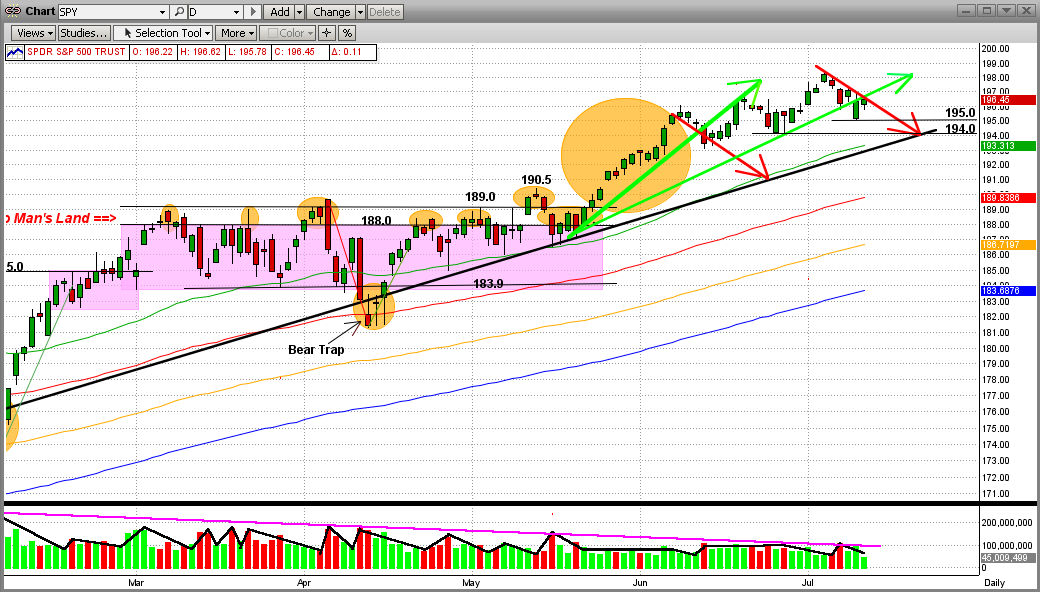In our previous Blog from 6/07/2014 below, we showed the "breakout" of the SPY after months of sideways trading. The market (the SPY) broke decisively to the upside. In the graph in that Blog, we pointed out that the new uptrend could continue for a while (green arrow), or go back down (red arrow) to "test" the long-term trendline (black line). Of course, we did not expect a downside "breach" at that time.
So, what has happened since then. As can be seen in the new graph immediately below, the SPY has made a few minor dips, but it is still fighting its way up. And, it has only experienced 3 tiny downdrafts since the breakout. One problem with the uptrend since last February is that it has "climbed the wall" on ever decreasing (but not really low) volume. We can live with that for now. The new support level for the SPY is at $194, the point at which both the long-term trendline (black line) and the 50-day EMA (green line) converge. So, if the SPY should break below $194, we will have grave concerns about a major dip (if not the "biggie" itself). Keep your eyes open because this is where the 3rd "dip" (2nd red arrow) could be heading.
Let's stay alert and wait for MIPS to tell us what to do next.

<<< Previous Blog >>>
Saturday, 07 June 2014
After six failed attempts in a three-month sideways trading pattern, the market (the SPY) finally broke out to the upside from inside a "No Man's Land". And, what a breakout it has been! In the graph below, you can now see a new, powerful up-trend (green line).
It seems that this breakout has, so far, followed the tradition for sideways/flat patterns, that is:
1) markets usually breakout of a sideways pattern in the same way that they entered (i.e., if the market was moving up prior to the sideways pattern, it will usually break out to the upside and vice versa), and
2) the length of time that the market will follow the resulting move and the size of the resulting gains/losses is closely correlated to the amount of time that the market traded in the tight pattern.
My opinion on the reason for #2 above is that after a long battle, the losers (in this case, the bears) quit trading and go away for a long time. I also believe that this is how the market (like now) can make sizeable, sustainable gains on relatively low volume (little or no competition).
It seems that the most likely direction of the market from here is up. But, even though it could, this does NOT mean that the market will follow the green-line trendline in the graph below going forward. It's just as likely that the SPY could drop back some or go sideways until it hits the long-term trendline (black line in graph below), and then follow that trend up going forward. That would be like a "reversion to the trendline". Either way, we make money.
Also, do not rule out a correction after these healthy gains. It is not what I expect, but MIPS does not pay one bit of attention to my expectations. If the market does somehow unexpectedly drop from here, MIPS will get us out.

===================================================================================